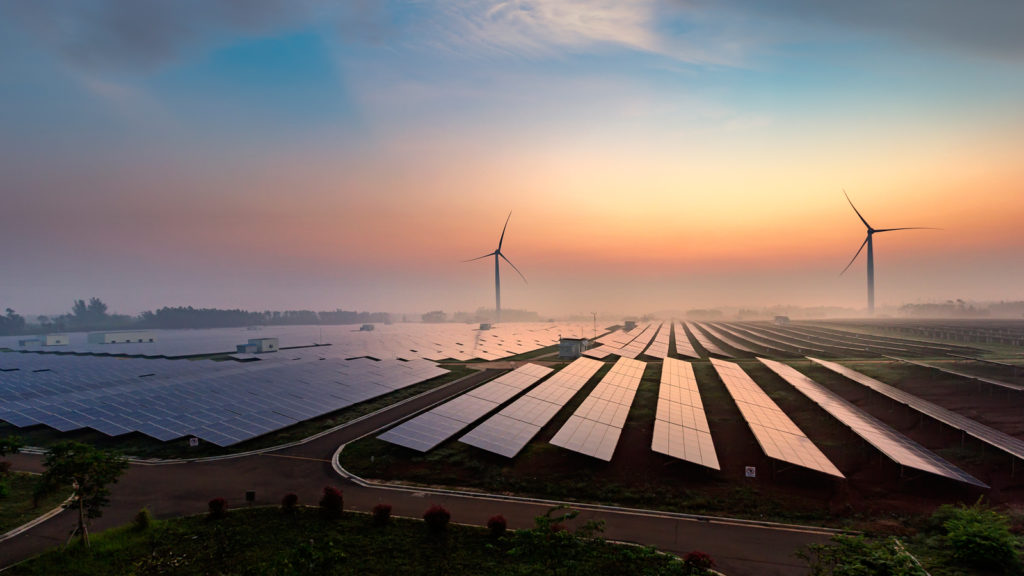Part 3 – Onshore Sector
Net zero emissions and the energy transition has never been more critical on the global, regional, national and local agenda. Government, businesses, and importantly, society, at large and across generations are driving new actionable momentum along this theme. This five-part Thought Leadership series takes stock of recent energy sector events and our predictions on what opportunities and challenges we can expect to see across ITPEnergised’s four sectors: Offshore Renewables; Onshore Renewables & Storage; Corporate, Industrial & Manufacturing and Property this year. This series is written for developers, investment funds, utilities, network operators and owners and government.
The outlook for UK onshore renewables development is promising, primarily due to wind and solar’s low Levelised Cost Of Energy (LCOE) alongside onshore projects’ inclusion in the latest auctions for CfDs. Fundamental and practical challenges remain however, including planning and consent alongside timely and cost-effective availability of grid connections at the scale required to make a dent in meeting net zero targets.
Onshore consents in Scotland, particularly wind consents, continue to hit the news including several of those ITPEnergised has been pleased to support. Onshore solar developments appear to be accelerating, particularly those in England that also meet the threshold of Nationally Significant Infrastructure Projects (NSIPs) requiring additional rigorous detail and planning to ensure that the consented project is buildable without post-consent variation. We look at some snapshot figures and some specific challenges and opportunities for the onshore sector.
More momentum on onshore wind, solar PV and battery storage at planning phase in the UK market with substantial acceleration in the past year as we track towards net zero as a nation. According to the Department for Business, Energy & Industrial Strategy (BEIS) there is now over 11 GW of onshore wind in development: 9.7 GW in Scotland, 0.1 GW in England, 0.6 GW in Wales and 0.6 GW in Northern Ireland.
9.4 GW of solar PV in development: 8.5 GW in England, 0.4 GW in Wales, 0.4 GW in Scotland and 0.2 GW in Northern Ireland.
13.1 GW of battery storage is in the development pipeline: 10.9 GW in England, 1.9 GW in Scotland, 0.2 GW in Wales and 0.1 GW in Northern Ireland, with an increasing number of energy storage assets successfully bidding in National Grid ESO’s capacity auctions. Of the English proposed battery storage developments, 1.7 GW are in colocation proposals with 1 GW co-located with renewables and 0.7 GW co-located with fossil fuel power plant.
Rising storage in the grid is likely to attenuate Balancing Mechanism and Ancillary Services revenues streams by mid 2020s and needing more reliance on pureplay wholesale power market arbitrage to payback invested capital. Premium, no doubt, for first to market but there are also opportunities with ScotWind when it comes online.
Lowering specific capex for wind and solar PV. Our internal modelling shows this could be one to watch as a real driver behind financial investment decisions in the next few years and being able to meet hurdle rates along with what may happen still to key grid charges e.g. the proposed removal of BSUoS payable by generators.
Contracts for Differences (CfD) Allocation Round (AR) 4 Applications have just closed with the UK Government looking to secure around 12 GW of capacity in the world’s largest auction ever and a welcome return of onshore renewables into the mix for the first time since AR 1; with the recent development of subsequent ARs to be held on an annual basis. We all await the results in Spring/Summer this year.
Hydrogen subsidy – new GB CfD style price stabilisation arrangement currently being consulted on for introduction from 2023 reflecting the success of the renewables CfD of the same.
Offshore developments through ScotWind and Celtic Sea may strengthen onshore grid giving rise to new onshore renewables opportunities/acceleration of development pipeline.
End of life – An increasing number of onshore renewables assets, particularly wind farms developed in the early 2000’s with 20-year design lifetime, are starting to reach the end of their engineered design lifetime and/or reaching the end of their permitted operation. As a result, end-of-life asset management, optimisation, upgrades and value engineering continues to grow.
Download Part 3 – Onshore on PDF here, and look out for the next article in this Thought Leadership series coming soon.
- Part 1— Summary
- Part 2— Offshore Renewables
- Part 3— Onshore Renewables
- Part 4—Corporate, Industrial & Manufacturing
- Part 5—Property & Urban Regeneration
For more information on any of the above or a chat about how ITPEnergised can support your onshore projects, please contact Jonathan Moorse, Head of Onshore Energy & Storage at jonathan.moorse@itpenergised.com.

